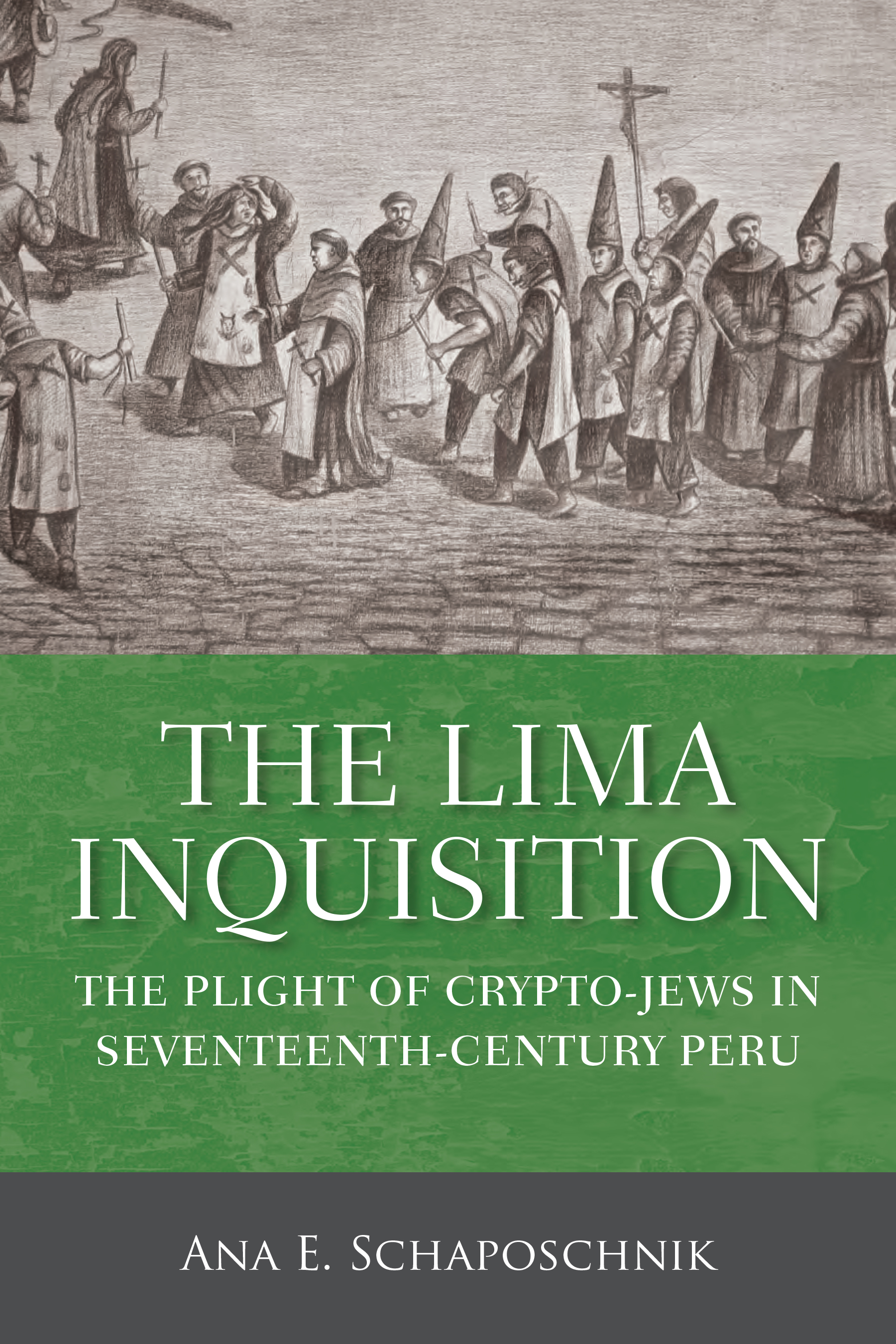ANA E. SCHAPOSCHNIK
THE LIMA INQUISITION: THE PLIGHT OF CRYPTO-JEWS IN SEVENTEENTH CENTURY
PERU
Madison: University of Wisconsin Press, 2017, ISBN 9780-0-299-30610-6
Reviewed by KAREM LISSETTE DELGADO1
In The Lima Inquisition: The plight of Crypto-Jews in Seventeenth Century Peru, Ana E. Schaposchnik examines the trials of approximately one hundred Crypto-Jews between 1635 and 1639, known collectively as The Great Complicity. She presents the circumstances surrounding the trials of the Lima tribunal against Crypto-Jews in Colonial Peru, the strategies Crypto-Jews employed during their trial, and the outcome of these trials starting with an explanation of the origin of Crypto-Jews and the institution known as the Inquisition.
Conversos were converts or descendants of converts to Christianity who had become New Christians by choice or by force. Many Spanish Jews received baptism during the mass killings or pogroms that began in 1391. When the Catholic Monarchs expelled Spanish Jews from Spain in 1492, many more Jews converted in order to remain in their land. Some Spanish Jews who left Spain took refuge in neighboring Portugal, but in 1497 they were forced to be baptized along with all Portuguese Jews. Although officially Conversos could not travel to the Americas, many arrived at places like Lima, Peru. The Catholic institution known as the Inquisition established to root out heresy and enforce Christian values by the Spanish Crown in 1478 and later in its colonies in 1570 continually questioned the initial conversion of Conversos. Some Conversos were accused of being Crypto-Jews, i.e. practicing Judaism in secret, while pretending to be Christian.
While Schaposchnik recognizes that scholars like Benzion Netanyahu, Yosef Haim Yerushalmi, Yirmiyahu Yovel, Gretchen Starr-Lebeau, Miriam Bodian, David Graizbord, and David Gitlitz have identified Conversos as Jews, Christians, or skeptics, she adopts the view of Nathan Wachtel that describes Crypto-Jews as Conversos who lived in constant tension between Christian and Jewish elements. She draws from primary sources from several archives, including the Archivo Histórico Nacional (AHN) in Madrid, the Arquivo Nacional da Torre do Tombo (ANTT) in Lisbon, and the Archivo General de la Nación (AGN) in Lima and uses trial documents of Crypto-Jews, summaries of trials written by Christian authors of the period including Juan Antonio Suardo and Josephe Mugaburu, and texts that critiqued the Inquisition like Reinaldo González Montes’ Artes de la Santa Inquisición Española.
Schaposchnik borrows from Michel Foucault to identify the tribunal of the Inquisition as an "immaterial panoptic.”2 The Lima Inquisition conducted Autos Generales de Fe (trials of faith concluding ceremonies), that were few but grand, to display the rationale of the Inquisition. The Auto General de Fe of 1639 held in Lima is an example of such a rare but successfully regulating event for the Inquisition. The trial of faith and its protocol consisted of a fixed structure made up of questions, torture, verdict, and outcome. Schaposchnik explains that all trials began with the presumption of guilt, not innocence, and that throughout, secrecy was enforced. Although Schaposchnik examines the structure of the trial of faith, she also provides loopholes that Crypto-Jews could use for their benefit, such as being declared insane. She analyses the trials of Joan Vicente and Garci Méndez de Dueñ as that included their social standing, their travels, what brought them to Lima, and their final outcomes. Many Crypto-Jews whose trials were part of The Great Complicity were Portuguese Converso merchants who lived in colonial Lima. Schaposchnik thus, examines the interaction between the Spanish and Portuguese Inquisitions. She looks at correspondence between both Inquisitions and at narratives that include trial summaries of The Great Complicity written by Christian writers at the time. In her analysis of the nearly one hundred cases, Schaposchnik provides statistics about the varying degrees of religiosity of the accused and about their town of origin in Spain, Portugal, or Brazil.
The Lima Inquisition looks at the involvement of Crypto-Jews in Lima with others in the Crypto-Jewish community of Peru, the Jewish community of Amsterdam that was founded by Crypto-Jews, and the wider diaspora. Schaposchnik argues that despite isolation, alienation, and secrecy in the cells imposed by the Lima tribunal, Crypto-Jews communicated with each other. Prisoners, for instance, took advantage of bureaucratic corruption, insufficient number of cells, and assistance from those that worked in the secret cells and had a collective agency. They interacted with the guards and with each other. She discusses strategies Crypto-Jews used to influence their trials like speaking in African languages with their servants to send messages to each other.
To conclude, Schaposchnik examines The Great Complicity’s Auto General de Fe by identifying its physical setting, its duration, the attendees, the Crypto-Jews on trial, and the outcome of their trials. She describes the Auto General de Fe from the point of view of Christian society made up of inquisitors, secular officials, Lima residents, and those who were visiting Lima on January 23, 1639. The Inquisition reasoned that by condemning Crypto-Jews to varied sentences that included flogging, exile, and burning at the stake at the Auto General de Fe, they would regulate society and eliminate heresy.
1 Karem Lissette Delgado is a graduate student at the University of California, Irvine, where she studies Spanish and Latin American Jewish Literature.
2 Michel Foucault, Discipline and Punish: The Birth of the Prison (New York: Vintage Books, 1979): 201-202.
Copyright by Sephardic Horizons, all rights reserved. ISSN Number 2158-1800

